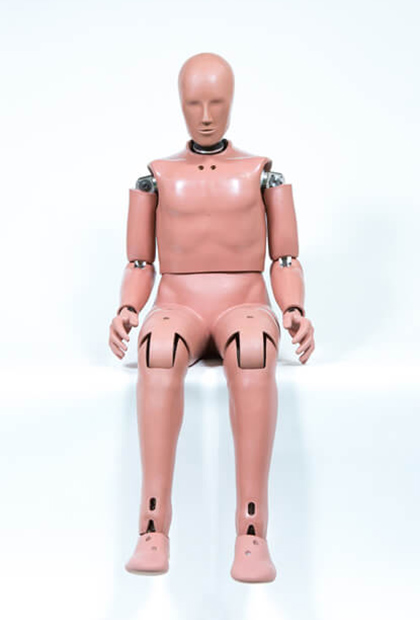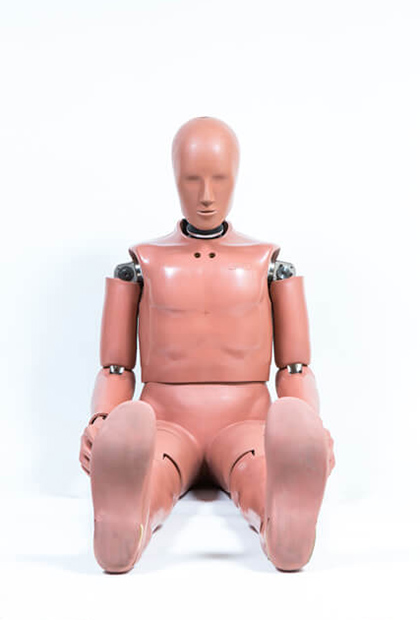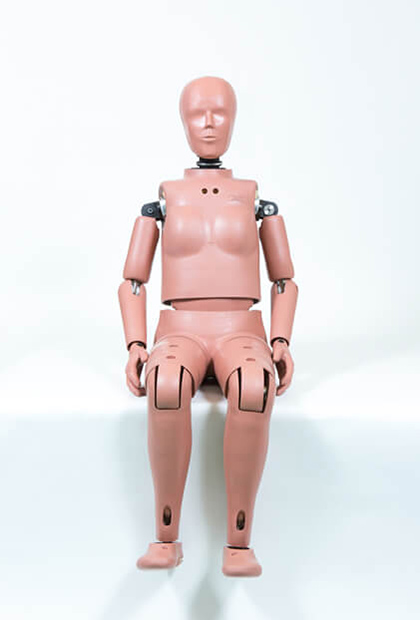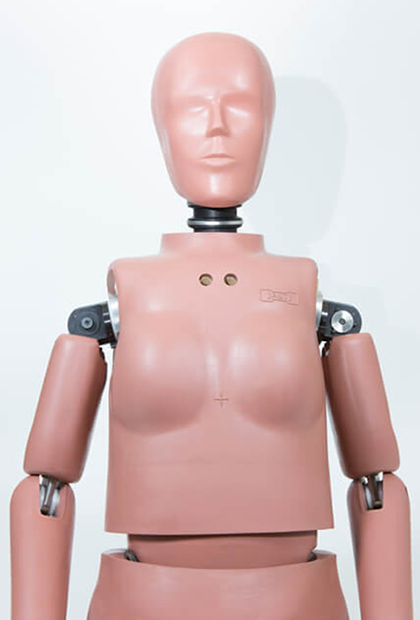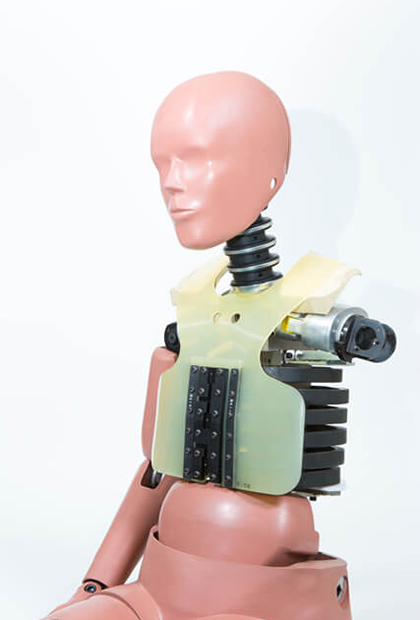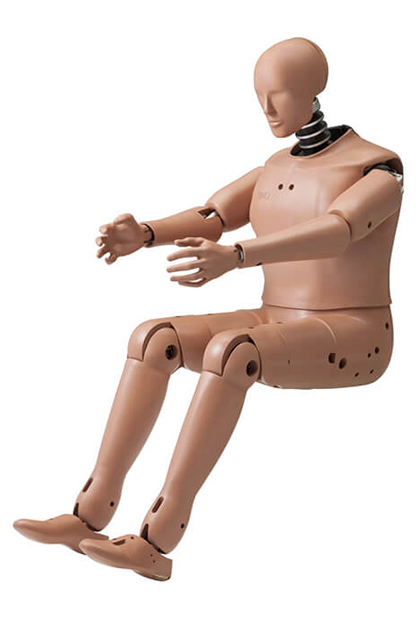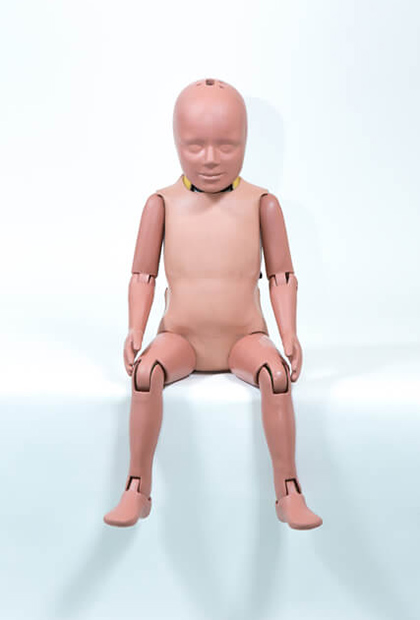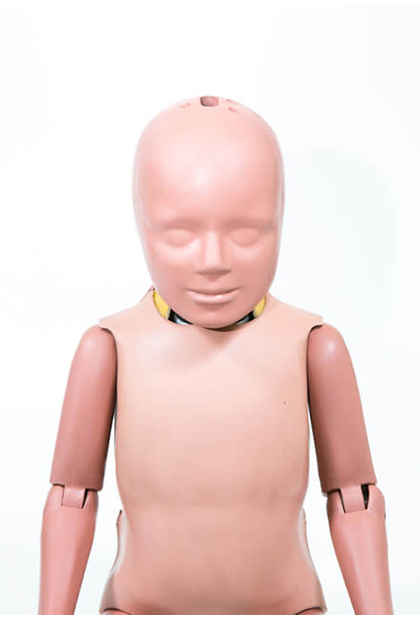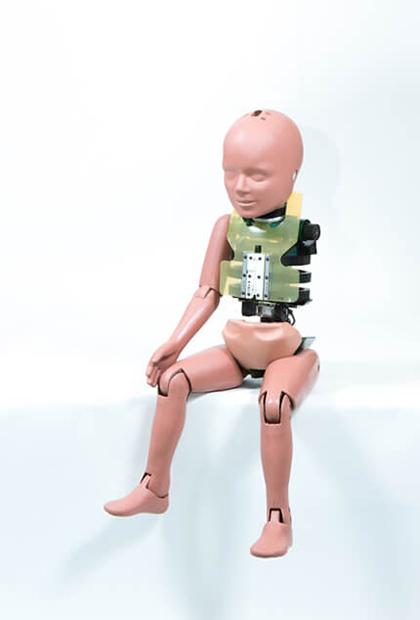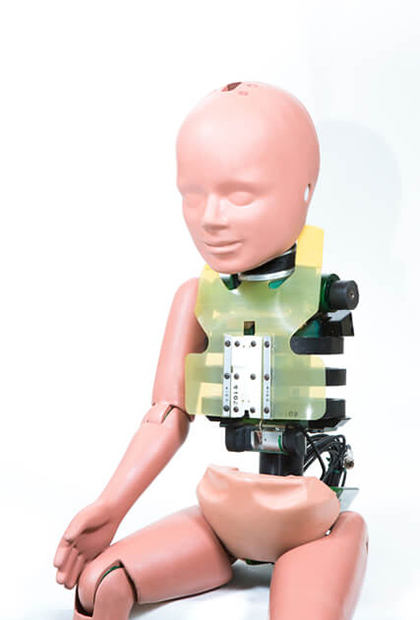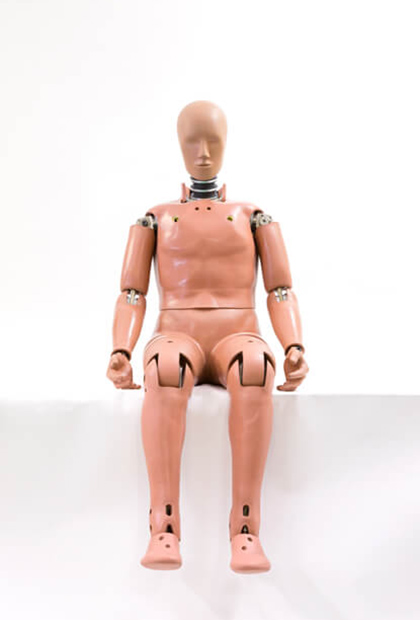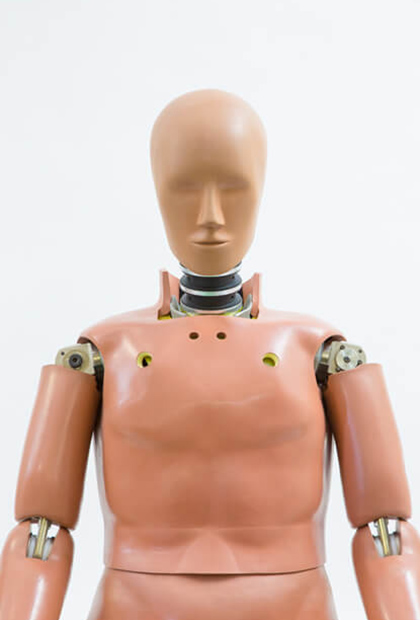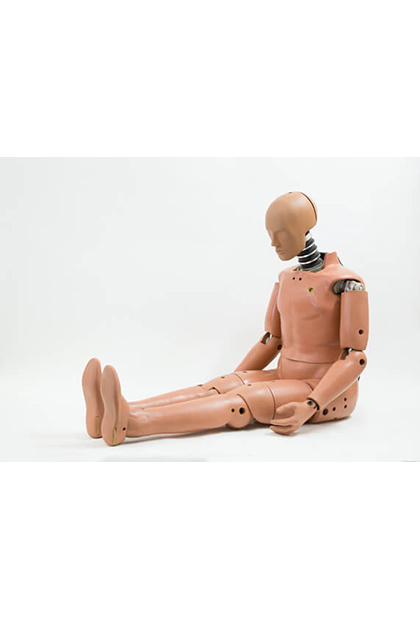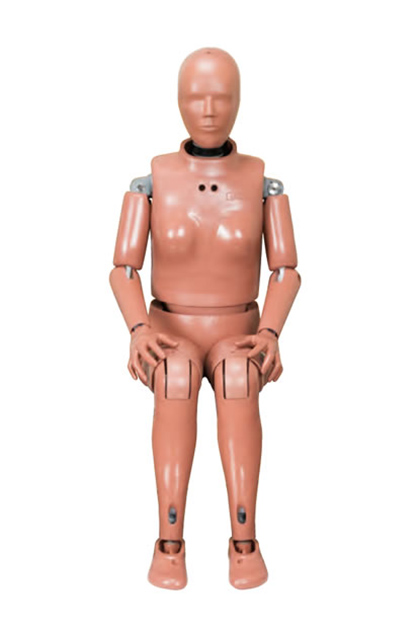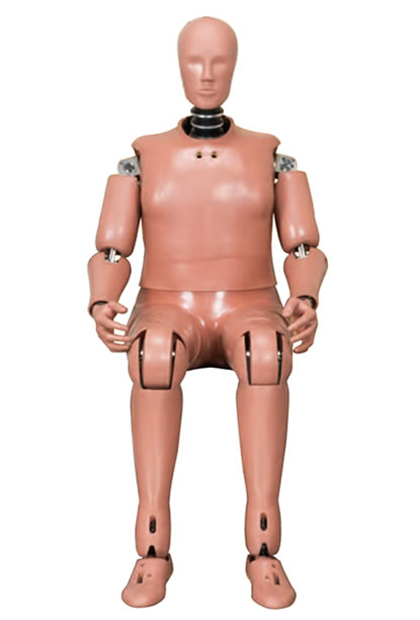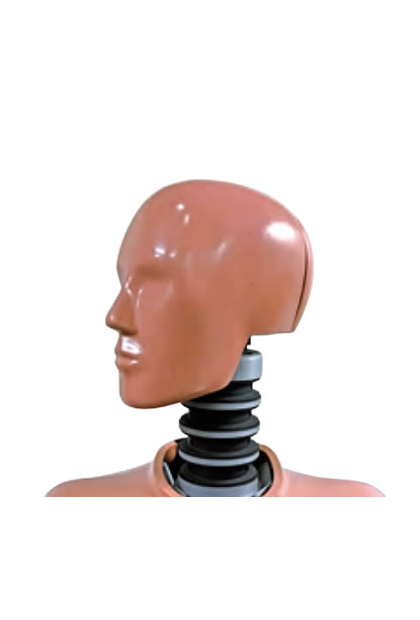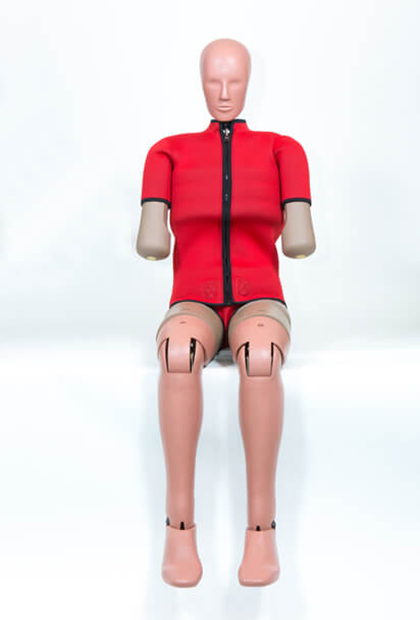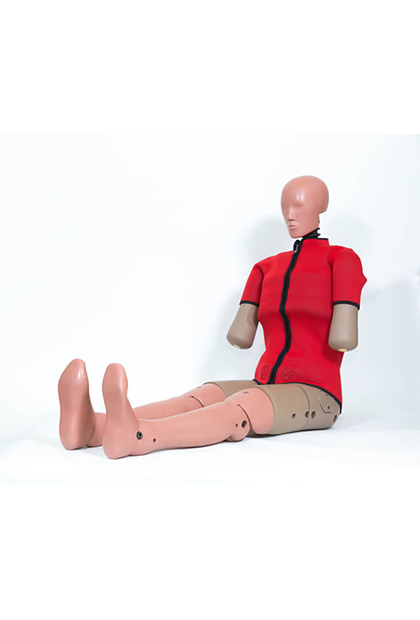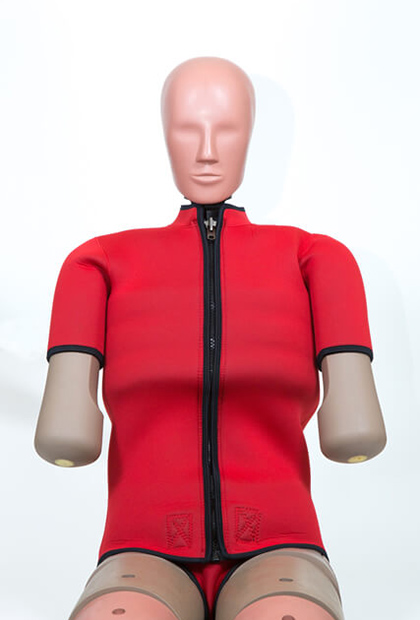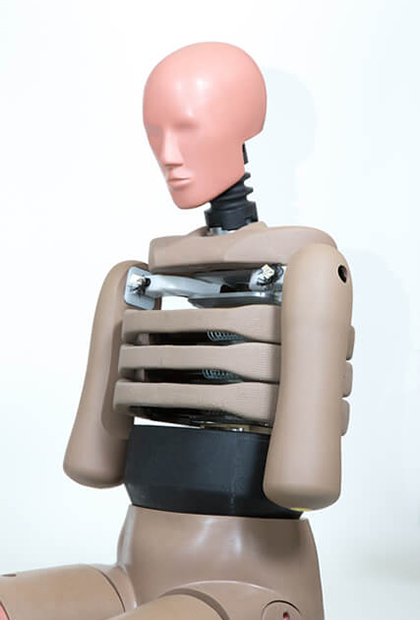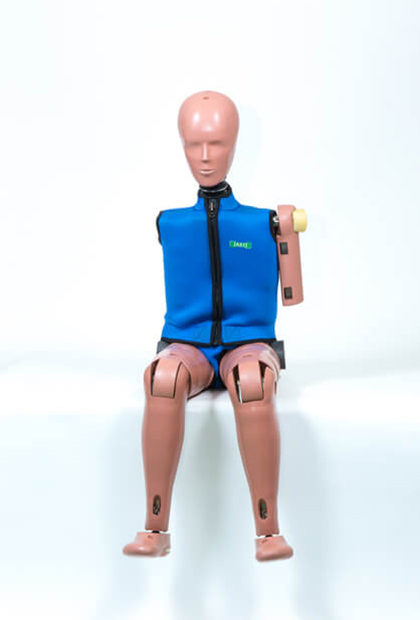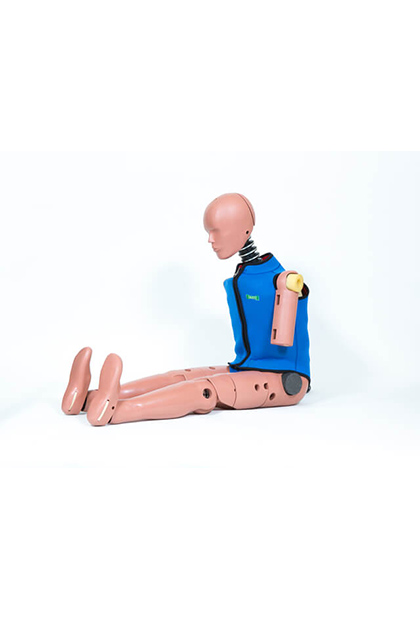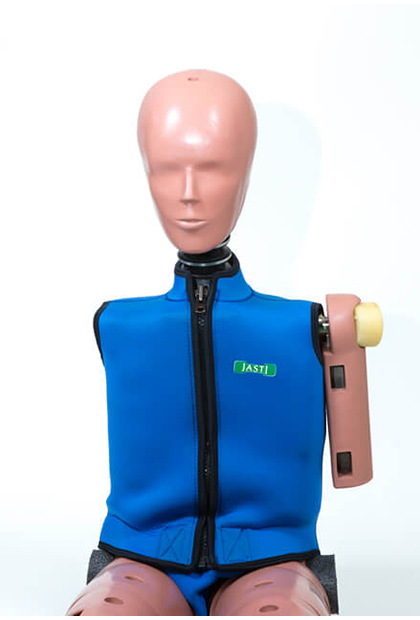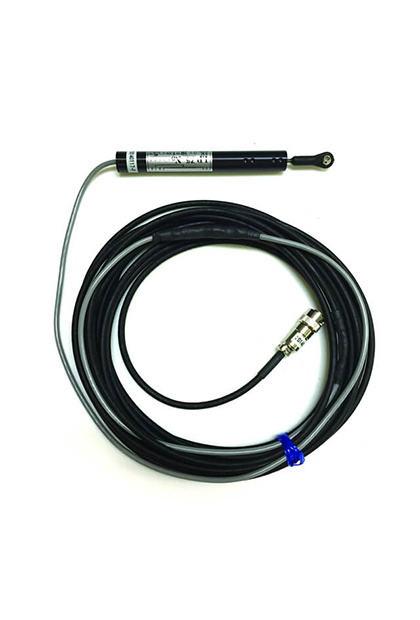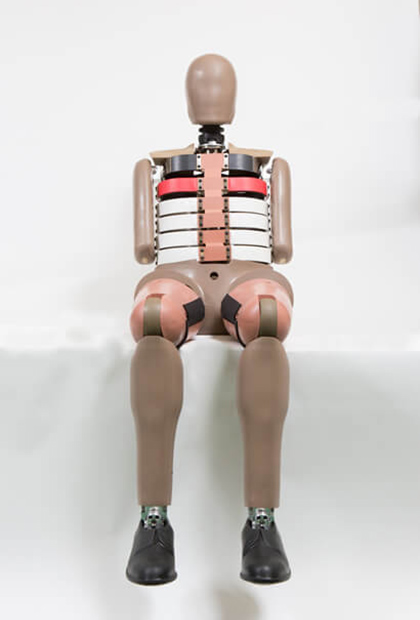ANTHROPOMORPHIC TEST DEVICES (ATD)
For Front Impact Test Dummy
- For Front Impact Test Dummy LIST
For Side Impact Test Dummy
- For Side Impact Test Dummy LIST
Crash Test Dummy
All these dummies are manufactured and certified in Japan to be specified under CFR 49, Parts 572.
These dummies are used for a kind of car crash tests, frontal impact and frontal offset impact.
Used as weight dummy for sled test, we supply some special parts to prevent from easy breakages (see R&D dummy parts).
For pedestrian dummy, it is used for R&D purposes, such like evaluation for pedestrian/cyclist/rider injury.
We receive any offers to modify the dummy parts, to assemble the sensors on requested parts and/or to have the original specifications and performances.
These dummies are used for a kind of car crash tests, frontal impact and frontal offset impact.
Used as weight dummy for sled test, we supply some special parts to prevent from easy breakages (see R&D dummy parts).
For pedestrian dummy, it is used for R&D purposes, such like evaluation for pedestrian/cyclist/rider injury.
We receive any offers to modify the dummy parts, to assemble the sensors on requested parts and/or to have the original specifications and performances.
For Front Impact Test Dummy
Hybrid-III 50th Percentile Male
Hybrid-III 5th Percentile Female
Hybrid III 95th Percentile Large Male
Hybrid-III 3YO Child
Thor50 Dummy
FAA Dummy
Crash Test Dummy with Modifications
Pedestrian Hybrid-III 5th Female
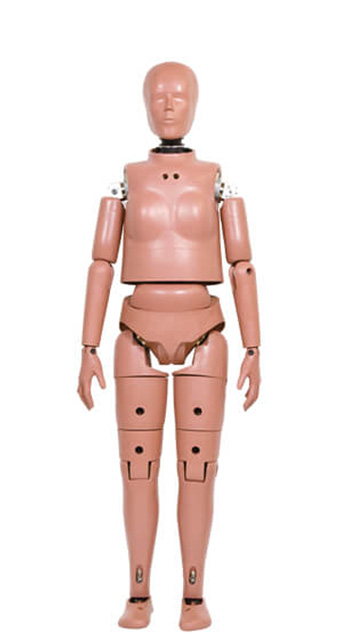
Pedestrian Hybrid-III 50th Male
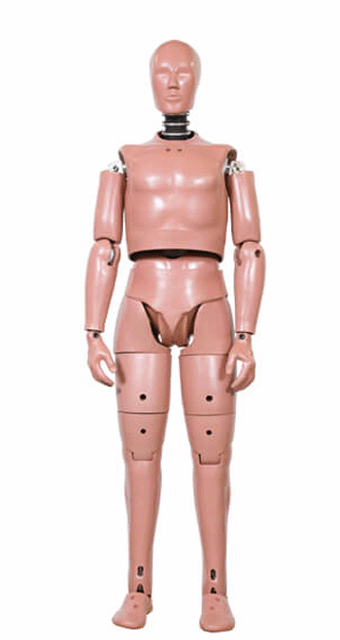
Pedestrian Hybrid-III 95th Large Male
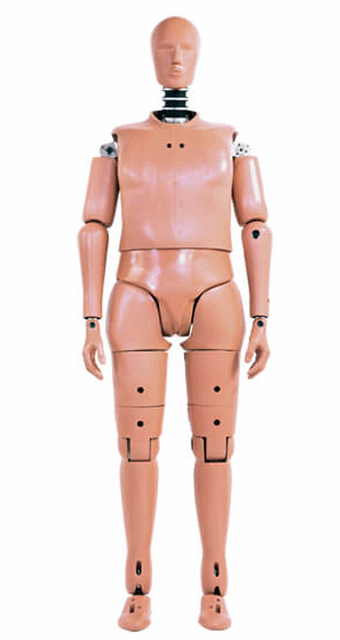
Light Weight Hybrid-III 5th Female(20KG)
Light Weight Hybrid-III 95th Large Male(30KG)
For Side Impact Test Dummy
ES-2/ES-2re Side Impact Dummy
incl. ES-2(re) Side Impact Dummy Linear Position Transducer
SID-IIs Side Impact Dummy
incl. SID-IIs 1/2 Potentiometer
WorldSID 50th Percentile
Male Side Impact Dummy W50-00000
WorldSID 50M w/o suit, front and side view:


